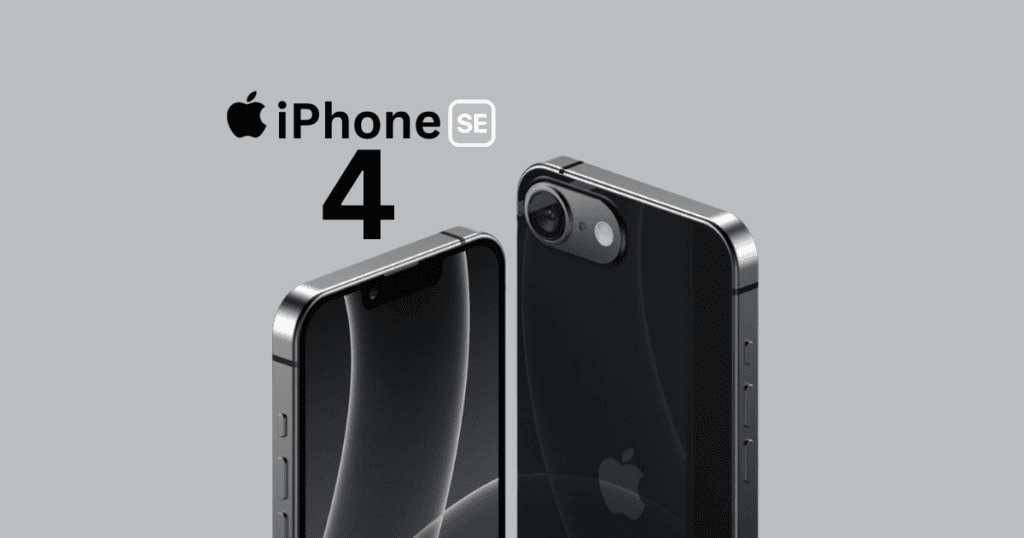The introduction of the iPhone SE 4 signifies a pivotal moment in Apple’s strategic shift towards OLED technology, representing the first entry-level device to incorporate a 6.06-inch OLED display. This advancement not only promises improved visual performance but also indicates a broader commitment to enhancing consumer experiences across all product lines. As Apple approaches its goal of a complete OLED transformation by 2025, the implications for market dynamics and consumer expectations are substantial. What remains to be seen is how this transformation will impact Apple’s competitive positioning and customer loyalty in an increasingly saturated market.
Overview of iPhone SE 4
The iPhone SE 4 represents a pivotal advancement in Apple’s entry-level smartphone lineup, set to launch between March and May 2025.
This model features a larger 6.06-inch OLED display, a significant upgrade from the previous 4.7-inch LCD screen, ensuring enhanced visual quality. Its design mirrors that of the iPhone 14, incorporating modern elements such as Face ID and a USB-C port, thereby replacing both the Touch ID and Lightning port.
Powered by the A18 chip, the iPhone SE 4 is anticipated to deliver exceptional performance, supported by up to 8GB of RAM and a 48-megapixel single rear camera, making it a compelling choice for budget-conscious consumers seeking advanced technology and functionality in their smartphones.
OLED Technology in iPhone SE 4
With the iPhone SE 4, Apple introduces a groundbreaking feature in its entry-level smartphone lineup by adopting OLED technology for the first time. This shift to OLED screens enhances visual quality, offering richer colors and deeper blacks compared to previous LCD models. The iPhone SE 4’s display size is expected to increase from 4.7 inches to 6.06 inches, further improving user experience. OLED displays are primarily sourced from BOE Technology Group, with LG Display as a secondary supplier, showcasing Apple’s commitment to diversifying its supply chain. This move not only enhances the iPhone SE series but also aligns with Apple’s goal to fully convert its product line to OLED technology by 2025.
| Feature | iPhone SE 4 | Previous SE Model |
|---|---|---|
| Display Type | OLED Display | LCD |
| Size | 6.06 inches | 4.7 inches |
| Primary Supplier | BOE Technology Group | N/A |
| Secondary Supplier | LG Display | N/A |
| Transition Year | 2023 | N/A |
Expected Release Date and Pricing
Anticipation surrounds the release of the iPhone SE 4, expected to debut between March and May 2025. This upcoming model signifies a pivotal update for the SE series, particularly with its new OLED display.
Key details regarding the iPhone SE 4 include:
- Expected Pricing: Anticipated to range from $499 to $549, reflecting a modest increase from its predecessor.
- New Features: Incorporation of Face ID, a USB-C port, and enhanced RAM, appealing to budget-conscious consumers.
- Display Size: A larger 6.06-inch display will enhance visual quality, aligning the SE series with premium features.
This strategic update not only emphasizes Apple’s commitment to innovation but also addresses evolving market demands.
Key Features and Specifications
Apple’s iPhone SE 4 is set to introduce a range of impressive features and specifications that redefine the budget smartphone experience.
This model marks Apple’s first venture into OLED display technology, increasing screen size to approximately 6.06 inches for enhanced visual quality.
Powered by the A18 chip, the iPhone SE 4 promises improved performance and efficiency, aligning it with the iPhone 16 lineup.
Significantly, it replaces the traditional Touch ID with advanced Face ID, enhancing security and convenience.
Additionally, the device boasts a remarkable 48-megapixel camera, ensuring exceptional photography capabilities.
With RAM upgrades expected between 6GB to 8GB, the iPhone SE 4 is poised to deliver a powerful and modern user experience.
Supply Chain Diversification
The introduction of the iPhone SE 4 not only enhances its features but also signifies a strategic change in supply chain management for Apple.
By selecting BOE Technology Group as the primary supplier of OLED displays and LG Display as a secondary supplier, Apple is diversifying its sourcing strategy. This alteration reflects a move away from traditional LCD suppliers like JDI and Sharp, which previously dominated the market.
Key points include:
- Shifting to OLED displays for better visual quality.
- Reducing reliance on a single supplier to mitigate risks.
- Enhancing competition among suppliers to address potential yield issues.
This diversification aligns with Apple’s commitment to delivering high-performance devices while adapting to market dynamics ahead of the iPhone SE 4’s early 2025 launch.
Market Impact of OLED Transition
OLED technology is poised to revolutionize the smartphone market, particularly with the upcoming iPhone SE 4. This change marks a significant departure from LCD technology, which has dominated the market, affecting display manufacturers like Japan Display and Sharp, who previously held a combined 70% market share.
As Apple embraces OLED, Samsung Electronics is expected to maintain its stronghold, supplying nearly 50% of OLED displays for iPhones. The introduction of the iPhone SE 4, featuring an expanded 6.06-inch OLED display, not only enhances visual quality but also positions Apple competitively in the budget segment with a starting price of $499.
This strategic shift underscores Apple’s commitment to innovation and adaptability in a rapidly evolving market landscape.
Consumer Reception and Expectations
As consumers enthusiastically await the release of the iPhone SE 4, expectations are running high due to its significant enhancements over previous models.
The introduction of an OLED display marks a pivotal improvement for budget-friendly smartphones, enticing consumers with superior visual quality.
Key features that are generating excitement include:
- A 48-megapixel camera, promising advanced photography capabilities.
- Upgraded RAM, enhancing overall performance for multitasking.
- The inclusion of Face ID and a USB-C port, aligning it with premium models.
Priced competitively between $499 and $549, the iPhone SE 4 is poised to attract budget-conscious consumers who seek advanced features without breaking the bank.
As anticipation builds for its anticipated launch in early 2025, consumer expectations remain at an all-time high.
MacReview Verdict
The introduction of the iPhone SE 4 signifies a pivotal moment in Apple’s journey towards an all-OLED future. By blending affordability with advanced features, this model not only elevates the user experience but also echoes the company’s commitment to innovation. As consumers enthusiastically anticipate this release, the iPhone SE 4 stands as a proof of Apple’s vision—transforming the way technology enhances daily life, much like a vibrant sunrise heralds a new day of possibilities.



